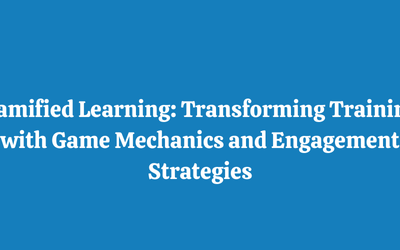E-learning for financial services
E-learning for financial services
Introduction
The financial services industry is one of the most dynamic in the world, and it’s also one of the largest. The industry has experienced tremendous growth over the past decade and will continue to do so in the future. This means that there are many opportunities for professionals in this area to make their mark on the market. One way to do this is by creating an e-learning course that teaches others about specific aspects of their field. Here are some important tips for creating an effective e-learning course:
The Importance of E-learning for financial services
E-learning is a great way to keep employees updated on new policies, procedures and regulations. It can also be used for team meetings, training sessions and other purposes. The key point here is that e-learning is an effective way of delivering training to your employees without them having to leave their office space or travel long distances.
Understanding the Industry
The first step in understanding the industry is to understand the basics. What are some of the most important things to know about financial services?
- The average age of a customer is 47 years old.
- The top reason people don’t use online banking is because they’re afraid of losing money or having their information stolen by hackers.
- Only 18% of Americans said they’d trust their bank with their money if they needed cash within an hour, while another 18% said they wouldn’t do so at all–even though these numbers have dropped since 2013 (when 44% and 27%, respectively).
How to Create an e-Learning Course
The first step to creating an e-learning course is to keep it simple. Use a template, or if you’re feeling adventurous, create your own. A good place to start is with a question-and-answer format that allows students to test their knowledge and gain confidence in their learning.
Next, add interactive elements such as video clips and audio recordings along with images from the field that reinforce what’s being taught in the course. You can also include quizzes at key points throughout the presentation so that students can see how much they’ve learned over time–and this will allow them to compare notes with fellow learners who may have taken different courses on similar topics!
Once you’ve created all of these components (or some combination), create an outline for what goes into each section of your course so that other people know exactly where they should go when they get started on their own projects!
Use A Course Template
You can use a course template to design your e-learning courses. The template should be flexible, easy to use and update.
E-learning for financial services – Keep It Interactive
- Audio and video: Use audio and video to help the user learn how to use the software. For example, if you’re teaching them about a new feature of your product, use an example that shows how you would use it in practice.
- Quizzes and tests: Give users a chance to test their knowledge by letting them take quizzes or completing tests that assess their knowledge of different topics within your course.
- Games: Make learning fun by integrating games into your e-learning content as another way for learners to demonstrate their understanding of concepts taught within the course material itself (for example, one game might be played on a computer screen while another is played on paper). This will allow learners who struggle with reading comprehension skills or math facts but enjoy playing games such as Pacman could still get something out of this type of learning experience even though they may not be able find success at those areas during actual class sessions themselves!
If you have to create an e-learning course in the financial services industry, keep these basic tips in mind.
If you’re working in the financial services industry, it’s important to understand the trends and challenges of e-learning. The industry is one that has been rapidly changing over the past few years, with many new technologies coming into play. This can mean that your company needs to be prepared for any changes that come along–and they will happen quickly!
To create an effective e-learning course for your clients, keep these basic tips in mind:
- Understand what type of content each learner needs most from their training material. For example, if a customer wants to learn about how much money he or she should spend on credit cards each month (a common question), then you need content that addresses this topic specifically–and not just general information about budgets or spending habits.
- Use templates as much as possible so that all employees across departments have access to consistent standards throughout their workday; this will help prevent confusion among colleagues who may not know exactly what’s expected from them yet but want all future sessions based off previous ones anyway!
Conclusion
A course in financial services is a great way to keep your skills up-to-date, but it can be difficult to find the time. If you’re looking for an e-learning service provider we are happened to be the best in business click on the link below to learn more.
Learn More About Stratbeans Elearning Services.
Our News
- AI
- Animations
- Articulate
- Articulate 360
- Articulate Engage
- Articulate Live
- Articulate Presenter
- Articulate Quizmaker
- Articulate Replay
- Articulate Review
- Articulate Storyline
- Articulate Storyline 3
- Articulate Studio
- bite sized learning
- Characters
- Content Library
- Corporate Communication
- E-Learning
- e-Learning Authoring Tools
- Employee Engagement
- Game-Based Learning
- Gamification
- Gamiflexer
- Go Sales
- Healthcare
- Instructional Design
- Interactivity
- Knowledge Transfer
- L&D Trends
- Learning
- Learning & Development
- Learning Experience platform
- Learning Management System
- LMS
- LXP
- Microlearning
- mLearning
- Mobile Learning
- Nugget Learning
- Online Training
- Peek
- Performance Support
- Preso
- Quiz and Assessment Platform
- Replay 360
- Rise
- SCORM
- Screen Capture
- Software
- Storyline 360
- Studio 360
- Training Management
- Trainings
- Uncategorized




